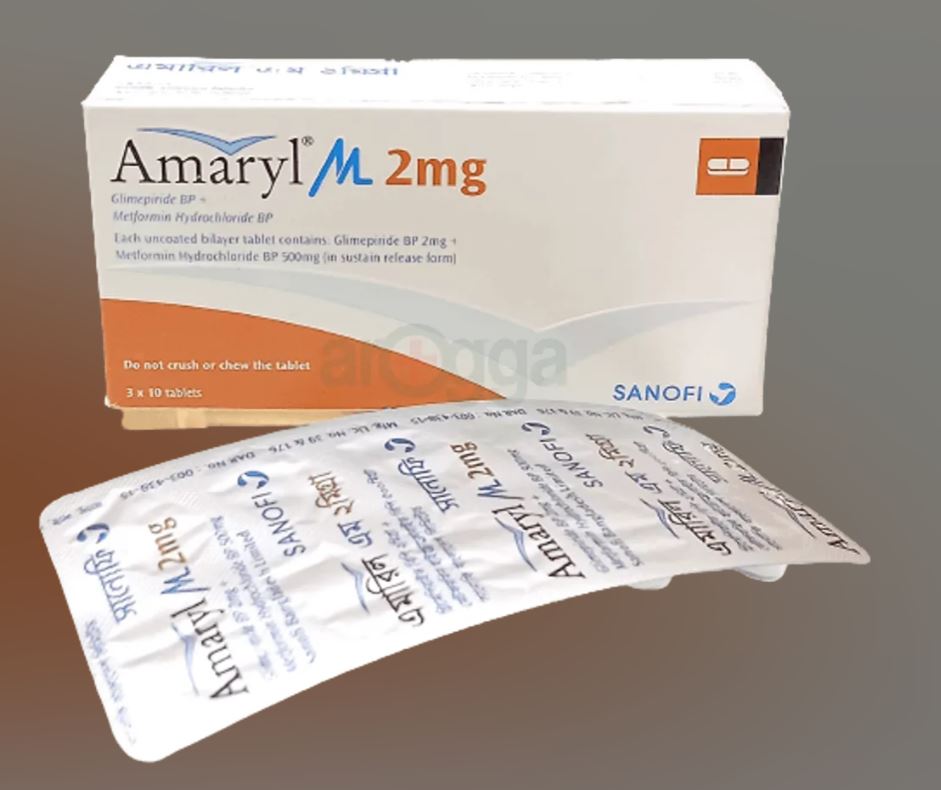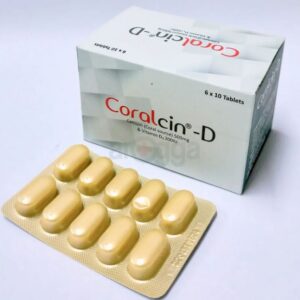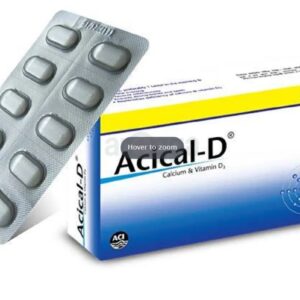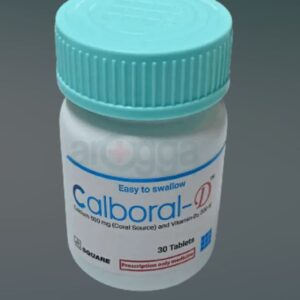Description
Introduction
Amaryl M 2 belongs to a category of medicines known as anti-diabetic drugs. It is a combination of two medicines used to treat type 2 diabetes mellitus in adults. It helps control blood sugar levels in people with diabetes. Amaryl M 2 should be taken with food. Take it regularly at the same time each day to get the most benefit. Your doctor will decide what dose is best for you and this may change from time to time according to how it is working according to your blood sugar levels. Keep taking this medicine, even if you feel well or your blood sugar levels are controlled. If you stop it without consulting your doctor, your blood sugar levels could rise and put you at risk of kidney damage, blindness, nerve problems and loss of limbs. Remember that it is only part of a treatment program that should also include a healthy diet, regular exercise, and weight reduction as advised by your doctor. Your lifestyle plays a big part in controlling diabetes. The most common side effect of Amaryl M 2 is low blood glucose levels (hypoglycemia). Make sure you recognize the signs of having low blood glucose levels, such as sweating, dizziness, headache, and shaking and know how to deal with it. To prevent this, it’s important to have regular meals and always carry a fast-acting source of glucose such as sugary food or fruit juice with you. Drinking alcohol can also increase your risk of low blood sugar levels and should be avoided. Other side effects that may be seen on taking this medicine include taste changes, nausea, diarrhea, stomach pain, headache and upper respiratory tract infection. Some people may find that they put on weight with this medicine. You should not take it if you have type 1 diabetes mellitus, if you have diabetic ketoacidosis (high levels of acid in your blood), or if you have severe kidney or liver disease. Before taking this medicine, tell your doctor if you have ever had heart disease. It may not be suitable. Pregnant or breastfeeding women should also consult their doctor before taking it. Your blood sugar levels should be checked regularly and your doctor may also advise blood tests to monitor your blood cell counts and liver function.
Uses of Amaryl M 2
- Type 2 diabetes mellitus
Side effects of Amaryl M 2
- Hypoglycemia (low blood glucose level)
- Taste change
- Nausea
- Diarrhea
- Stomach pain
- Headache
- Upper respiratory tract infection
How to use Amaryl M 2
Use it as advised by your doctor or check the label for directions before use. Amaryl M 2 is to be taken with food.
How Amaryl M 2 works
Amaryl M 2 is a combination of two antidiabetic medicines: Glimepiride and Metformin. Glimepiride is a sulfonylurea which works by increasing the amount of insulin released by the pancreas in order to lower the blood glucose. Metformin is a biguanide which works by lowering glucose production in the liver, delaying glucose absorption from intestines and increasing the body’s sensitivity to insulin.
 Quick Tips
Quick Tips- Monitor your blood sugar level regularly while you are taking this medicine.
- It can cause hypoglycemia (low blood sugar level) when used with other antidiabetic medicines, alcohol or if you delay or miss a meal.
- Inform your doctor about your diabetes treatment if you are due to have surgery under a general anesthetic.
- Tell your doctor immediately if you experience any deep or rapid breathing or if you have persistent nausea, vomiting, and stomach pain as Gemer 1 Tablet PR may cause a rare but serious condition called lactic acidosis, which is an excess of lactic acid in the blood.
- Your doctor may check your liver function regularly. Inform your doctor if you develop symptoms such as abdominal pain, loss of appetite, or yellowing of the eyes or skin (jaundice).
 Brief Description
Brief DescriptionIndication
Type 2 diabetes mellitus
Administration
Should be taken with breakfast or first main meal of the day.
Adult Dose
Oral Type 2 diabetes mellitus Adult: Each tablet contains glimepiride 1 mg or 2 mg and metformin sustained release 500 mg The initial recommended dose is one tablet once daily Maximum Recommended Dose The maximum recommended dose for glimepiride is 8 mg daily. The maximum recommended daily dose for metformin sustained-release is 2000 mg in adults. Dosage should be individualized on the basis of both effectiveness and tolerance.
Contraindication
Renal disease or renal dysfunction, as suggested by serum creatinine levels ≥1.5 mg/dL [males], ≥1.4 mg/dL [females] or abnormal creatinine clearance, which may also result from conditions such as cardiovascular collapse (shock), acute myocardial infarction, and septicaemia. Hepatic impairment. Known hypersensitivity to this product or any of its components. Acute or chronic metabolic acidosis, including diabetic ketoacidosis, with or without coma. Diabetic ketoacidosis should be treated with insulin. Patients undergoing radiologic studies involving intravascular administration of iodinated contrast materials, because the use of such products may result in acute alteration of renal function Pregnancy, lactation.
Mode of Action
Glimepiride stimulates the insulin release from functioning pancreatic β-cells and inhibits gluconeogenesis at hepatic cells. It also increases insulin sensitivity at peripheral target sites. Metformin decreases hepatic gluconeogenesis, decreases intestinal absorption of glucose and improves insulin sensitivity (increases peripheral glucose uptake and utilisation).
Precaution
Renal and hepatic impairment. Avoid alcohol consumption. Hypoglycaemic episodes.
Side Effect
Diarrhoea, vomiting, metallic taste, rash, isolated transaminase elevations, cholestatic jaundice, allergic skin reactions, photosensitivity reactions, leukopaenia, agranulocytosis, thrombocytopaenia, haemolytic anaemia, aplastic anaemia, pancytopaenia, blurred vision. Potentially Fatal: Lactic acidosis.
Interaction
Cationic drugs: Certain medications used concomitantly with metformin may increase the risk of lactic acidosis. Cationic drugs that are eliminated by renal tubular secretions (e.g: amiloride, digoxin, morphine, procainamide, quinidine, ranitidine, or vancomycin) may decrease metformin elimination by competing for common renal tubular transport systems. Hence, careful patient monitoring and dose adjustment of metformin/cationic drug is recommended. Miconazole (systemic route, oromucosal gel) and Phenylbutazone (systemic route): Increases hypoglycemic effect of glimepiride. Thiazide: Interactions between thiazide diuretics and oral antidiabetic agents decreases insulin sensitivity thereby leading to glucose intolerance and hyperglycemia. Hence diabetic patients should be monitored closely. Other: Concomitant administration of angiotensin enzyme inhibitors (captopril, enalapril), other antidiabetic drugs (insulin, acarbose) beta-blockers, fluconozole, monoamine oxidase inhibitors (MAOIs), sulphonamides and NSAIDs, increasessensitivity to insulin and potentiates blood glucose lowering effect and may in some 6 instances, cause hypoglycemia. Patients receiving estrogens or oral contraceptives, phenytoin, quinolones should be closely monitored for loss of diabetic control. Potentially Fatal: NSAIDS, salicylates, sulfonamides, chloramphenicol, coumarins, probenecid, MAOs, and beta blockers potentiate the hypoglycemic action of glimepiride.









There are no reviews yet.